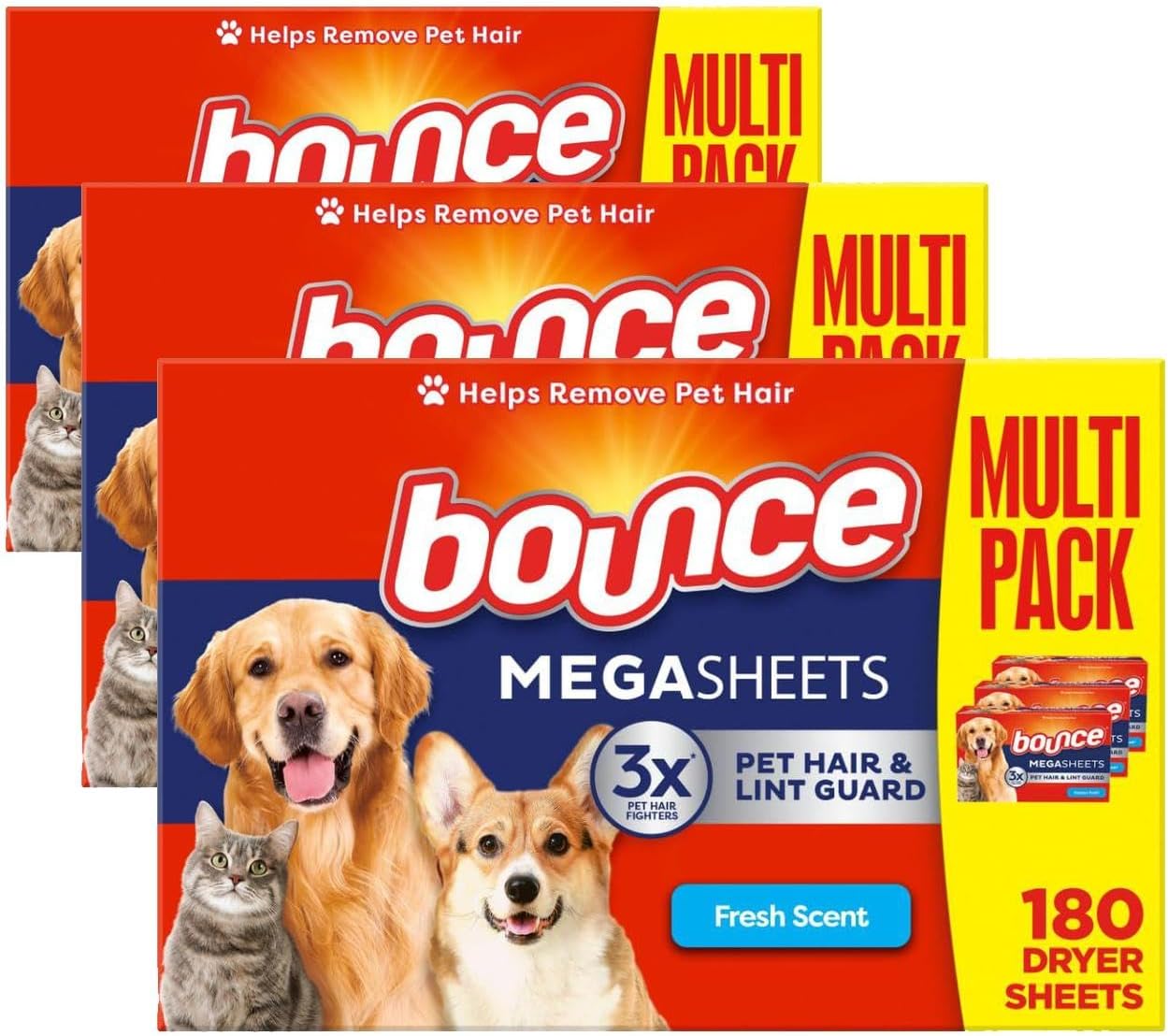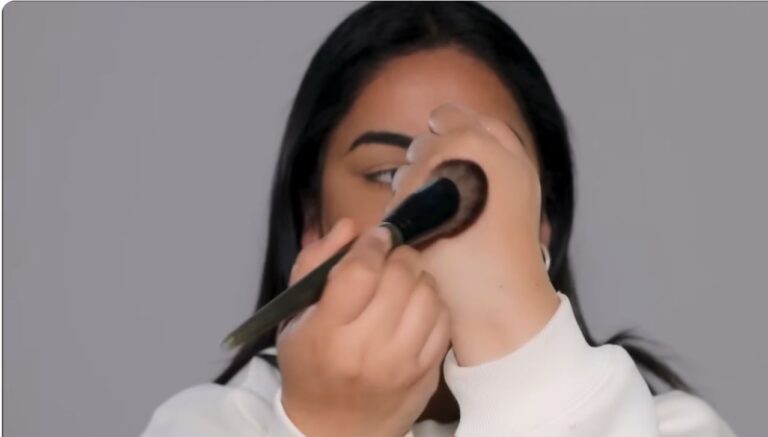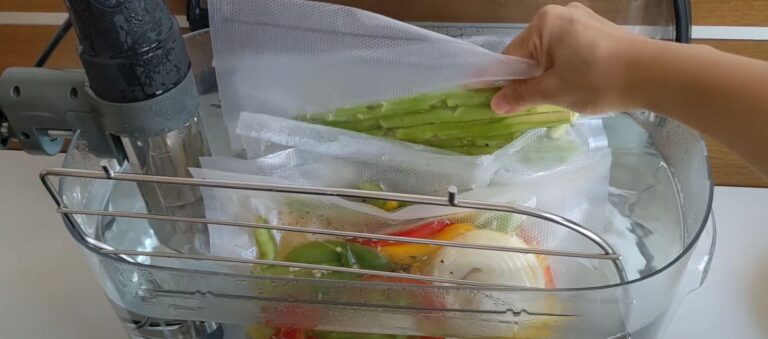Best Lint Removers for Pet Hair on Clothes – Top 5 Editor-Approved Picks for 2026
After analyzing top consumer reviews, product performance data, and expert cleaning guides across sources like Good Housekeeping, The Spruce, CNET, and verified user feedback on Lowe’s and Amazon, several trends became clear. People struggle with pet hair that clings to clothing because of static electricity and deep fiber embedding especially on dark and synthetic fabrics. Reusable lint removers outperform disposable tape rollers over time. The most reliable tools combine three things: high-grip surfaces, fabric-safe materials, and easy cleaning mechanisms.
The products that stood out repeatedly were the ChomChom Pet Hair Remover, FurZapper, Gonzo Natural Magic Pet Hair Lifter, Bounce Pet Hair and Lint Guard Dryer Sheets, and Scotch-Brite Pet Hair Roller. Together, they represent the top choices for removing pet hair from clothing without damaging fabric or relying on endless sticky sheets.
You know that moment when you’re halfway out the door and glance down to see your black shirt covered in tiny white hairs? It’s almost comical until you realize you’ve already brushed, rolled, and even tried sticky tape. Pet owners everywhere share that same sigh. Dogs shed, cats shed, and somehow their fur finds its way onto every outfit you love. It clings to cuffs, hides in seams, and appears again after the dryer cycle like a personal joke. It isn’t just about looking neat; it’s about feeling confident walking into work, dinner, or a meeting without carrying a souvenir from your pet.
The real problem is that most quick fixes don’t reach embedded hair. Disposable rollers fill up fast. Cheap brushes tug at the fabric. Even the best vacuum attachments can’t help when you’re already dressed and running late. What you really need is a lint remover built to trap pet hair one that handles static, grips fur without tearing fabric, and works on everything from soft knits to structured jackets.
In this guide, you’ll find the five best lint removers for pet hair on clothes tools that actually make a difference. We’ll look at how each product performs on different materials, what makes one better for dark fabrics, and which options save you money in the long run. By the end, you’ll know exactly which lint remover belongs in your closet, your car, or your work bag. You’ll spend less time picking at sleeves and more time wearing your clothes confidently pet hair-free.
Top 5 Lint Removers for Pet Hair on Clothes
1.ChomChom Pet Hair Remover – Best Reusable Roller Overall

Key Features:
-
Completely reusable, zero adhesive sheets or batteries required
-
Uses a special brush system to pick up and trap pet hair and lint
-
Works on a variety of surfaces, including clothing, couches, and car seats
-
Opens easily to dump out collected fur
Pros:
-
Eco-friendly, reducing ongoing waste
-
Great for clothes, furniture, and car interiors
-
Very durable and long-lasting
-
Delivers deep cleaning with satisfying results
Cons:
-
Cost is higher upfront, but pays off over time
-
Bigger and bulkier than sticky rollers, so not pocket-sized
-
Needs occasional cleaning to maintain full effectiveness
Why I Like It:
I love the ChomChom because it combines serious cleaning power with a sustainable design. It’s especially rewarding to see all that pet hair collect in the bin—and never having to buy refills is a big win.
2.FurZapper – Best Hands-Free Washer/Dryer Solution

Key Features:
-
Made from flexible, non-toxic silicone
-
Designed to be tossed into laundry machines with clothes
-
Attracts and pulls away hair during both washing and drying cycles
-
Reusable for hundreds of loads; easy to rinse clean
Pros:
-
No manual effort—just add to your machine
-
Works for all fabric types and bedding
-
Perfect for tackling whole loads or bulky items
-
No mess or residue, and low-maintenance
Cons:
-
Effectiveness varies based on laundry load and fabric
-
Not suitable for spot cleaning or quick fixes
-
Needs periodic rinsing to maintain tackiness
Why I Like It:
FurZapper is my favorite for “set it and forget it” efficiency. It’s ideal for loads that are too big for handheld rollers, and seeing the reduction of hair after a single wash is truly impressive.
3.Gonzo Natural Magic Pet Hair Lifter – Best for Delicate Fabrics and Quick Fixes

Key Features:
-
Made from natural rubber in a convenient sponge format
-
Chemical-free and safe for delicate fabrics
-
Suitable for use on clothes, upholstery, and even in the car
-
Rinses clean under running water, ready for repeated use
Pros:
-
Delicate and gentle—won’t snag or damage sensitive fibers
-
No sticky mess or residues left behind
-
Affordable and lasts a long time
-
Great for fast touch-ups anywhere in the house
Cons:
-
Not ideal for extensive deep-cleaning
-
Needs to be rinsed clean periodically
-
May dry out if left exposed for long periods
Why I Like It:
I’m a fan because this sponge is both gentle and effective, making it my go-to for fragile clothing, soft knits, and quick fixes around the home or car.
4.Bounce Pet Hair & Lint Guard Dryer Sheets – Best for Static Control

Key Features:
-
Extra anti-static formula specially designed for pet owners
-
Simple to use—just toss a sheet in with your drying load
-
Softens clothes and coats fibers to help prevent hair from clinging
-
Leaves clothes fresher and easier to de-lint after drying
Pros:
-
Makes laundry easier and less prone to static cling
-
Excellent for managing fur on dark or synthetic fabrics
-
Affordable and widely available
-
Leaves behind a pleasant, fresh scent
Cons:
-
Single-use and not very eco-friendly
-
Impact less noticeable if loads are overly full
-
Not a solution for hair already stuck on dry clothes
Why I Like It:
It’s super convenient—you just drop a sheet in and let it work. It’s perfect for busy households and helps minimize leftover hair after laundry, so you spend less time lint-rolling.
5.Scotch-Brite Pet Hair Roller – Best Budget Option with Strong Grip

Key Features:
-
Textured adhesive roller designed to grab hair from various surfaces
-
Features a comfortable, reusable handle with low-cost refill sheets
-
Compact for use at home, in your car, or on the go
-
Strong enough to pick up deeply stuck fur from clothes and fabric
Pros:
-
Very affordable and easy to find in stores
-
Consistently strong adhesive works well on even tricky pet hair
-
Portable size is perfect for travel bags or last-minute cleanup
-
Refills are easy to replace and available widely
Cons:
-
Adhesive sheets mean extra waste over time
-
Frequent use means you’ll need to buy refills
-
Not as good for heavy-duty or large-area cleaning
Why I Like It:
This classic roller is unbeatable for emergencies and quick, everyday fixes. It’s always ready in a pinch just a few swipes before leaving and you’re good to go.
How to Use a Lint Remover Effectively
Start with completely dry clothing, as lint rollers and brushes work best on dry surfaces. Lay your garment flat and gently roll or brush in one direction—don’t scrub back and forth, which can grind hair further into the fabric. Move slowly and firmly, but avoid pressing too hard. For sticky rollers, peel away any dirty sheet as soon as it’s full to keep performance high. Repeat until the surface looks clean, checking regularly for any missed spots.
Pre-treating Garments (e.g., Before Washing)
For heavily furred clothes, use your lint remover before tossing them in the wash. This helps keep pet hair from spreading in the machine and clinging to other clothes. You can also shake items outside or use a garment brush before laundry day to reduce total hair load and laundry headaches.
Tips for Stubborn Stuck Hair (Dark Clothes, Knitwear)
Dark clothes really show pet hair, and knits tend to hold onto fuzz. Use a slightly damp rubber glove, a reusable silicone remover, or even sticky tape—pat, roll, or dab gently for best pickup. Work against the grain or weave so you lift hair instead of pushing it deeper. For heavy-duty jobs, lay the item flat and go inch by inch so you tackle even the most stubborn patches.
Avoiding Damage: What Fabrics to Be Gentle With
Delicate materials such as silk, cashmere, angora, or fine knits need extra TLC. Use a soft-bristle brush or gentle lint roller, and never forcefully rub these fabrics—doing so can snag fibers or create bald spots. Always test on an inconspicuous area first, and follow clothing care labels to avoid damage.
Maintenance and Storage Tips
Reusable rollers and brushes perform best when cleaned often. Pick out hair and debris after every use, rinse silicone or rubber tools under water, and let them dry fully before your next session. For brushes, use a comb or another brush to pull out stuck lint.
When to Replace Disposable Sheets or Tools
Disposable lint roller sheets should be swapped the moment they’re covered in fuzz don’t try to stretch them, since the stickiness is key. For reusable tools, replace them when the adhesive wears thin or if the silicone/rubber develops cracks. Wear and tear reduces effectiveness, so a quick replacement keeps results top-notch.
Storing Touches So You’ll Use Them Regularly
Keep your lint remover handy—store it in the laundry room, inside your closet, or by the door for a last check before heading out. Visible storage means you’ll actually use it, and cleaning up after pets becomes quick and routine.
Additional Laundering Hacks for Pet-Hair Clothes
Add a dryer ball or anti-static dryer sheet into the dryer; this helps loosen hair and prevents it from sticking to clothes. After washing, shake out clothes before putting them in the dryer, and always clean lint traps thoroughly—pet hair builds up fast and can affect machine performance. If you’re battling severe shedding, running an extra rinse cycle or using specialized pet-hair laundry boosters can help.
Extra Tips to Keep Clothes Fur-Free
Certain synthetic fabrics (like nylon, polyester, and tightly woven cotton) are naturally more hair-resistant than fuzzy or textured ones (like fleece, velvet, or wool). Smooth fabrics help hair slide off instead of clinging, so consider these choices if you have shed-prone animals.
Washing Machine Maintenance for Pet Owners
Pet hair can clog washer drains and filters. Clean the washing machine drum and filter regularly, and run an empty cycle with vinegar or cleaning tablets to keep things fresh and working efficiently. Stay ahead of clogs by giving pet-furry clothes a pre-wash shake outdoors.
Using Anti-static Sprays and Dryer Balls
Anti-static sprays help prevent hair from sticking to clothes by neutralizing electric charge. Dryer balls keep laundry tumbling, lifting fur and reducing static. Combined, they make a noticeable difference for pet owners, and clothes come out cleaner and less clingy.
Common Questions About Lint Removers for Pet Hair
Can Lint Removers Damage Delicate Fabrics?
Yes, if you’re too rough, especially on silk, cashmere, or loosely woven knits. Always use light pressure, choose soft-bristle tools, and check care labels. Test in a hidden spot for peace of mind.
Do Dryer Sheets Actually Repel Pet Hair?
Dryer sheets work by reducing static, helping pet hair lift away more easily during tumble drying. While they don’t make clothes “immune” to hair, they do make a difference—especially when used alongside other methods, like shaking clothes before the wash and cleaning lint traps.
Are Reusable Rollers Worth the Price?
If you have pets that shed a lot or you care about sustainability, absolutely. They reduce waste, last a long time, and save money over endless disposable sheets. As long as you keep them clean and replace them when worn, reusable rollers do an excellent job.
How Often Should You Use a Lint Remover?
Use it whenever clothes come out of the closet looking fuzzy, after laundry, or before heading out if you see new fur. For pet owners, keeping a roller handy and using it as part of your laundry routine or morning prep will keep you looking fresh and fur-free.
Pre-vacuum Raking Technique
Before you even touch your vacuum, grab your carpet rake and use it to stir things up on your carpet. This isn’t just busywork—it’s all about getting the pet hair, hidden dander, and random fuzz up to the surface. The trick is to use short, firm strokes, working in the direction that feels most comfortable. Pull the rake toward you at an angle of about 45 degrees (like you’re raking leaves, but indoors!), and you’ll see clumps of hair that were completely invisible just a moment ago. By doing this first, your vacuum doesn’t have to fight an uphill battle trying to suck up hair that’s deeply tangled in carpet fibers. You’re helping it do its job—making vacuuming easier, faster, and way more effective.
Raking in Sections: Methodical vs Random
When you rake, you might be tempted to just wander around, giving each area a quick going-over. Don’t! Give your carpet a proper spa treatment by dividing it into neat sections—mentally draw grids, or tackle it row by row. Start on one end and work toward the door so you’re always moving dirt away instead of dragging it into freshly cleaned spots. Go over each section thoughtfully and with overlapping strokes, making sure every patch gets attention. This systematic approach guarantees you won’t miss any sneaky patches of hair, leaving no area untouched. Random raking is a time-waster and leaves stray fur behind, so make every stroke count.
Follow-up Vacuum Timing & How to Empty Filter/Bin
After raking, it’s time to vacuum right away, while everything is loosened and easy to grab. Your vacuum will collect much more hair than normal, and you’ll be pleased—but be prepared to empty the bin or bag soon after, especially if you’ve got a long-haired dog or cat. If you let that fur sit in the vacuum too long, it can clog up the system and make cleaning less effective. Always empty it outside if you can, shaking out the bin to avoid blowing dust or allergens back into your home. If you’ve got a HEPA filter, cleaning it regularly keeps your vacuum in top shape and your air cleaner, too.
Tips for Stairs, Upholstery, Pet Beds
Stairs and furniture often turn into pet-hair hotspots. When you’re working on stairs, use a smaller, handheld version of your rake and start at the top, moving down step by step. For couches, chairs, or your pet’s favorite bed, go slow and gentle—mini rakes or rubber brushes are ideal. Always test in a hidden spot first so you don’t accidentally snag delicate fabric. Give pet beds a good shake after raking to finish the job. For tight corners or fabric seams, you can follow up with a lint roller or just a piece of tape wrapped around your hand.
Maintenance Tips to Keep Your Rake Performing & Your Carpet Fresh
Clean the Head After Each Heavy Session
After a satisfying session of fur-moving, give your rake a quick clean. Pull off the hair and dust with your hands, or use a towel or your vacuum’s nozzle. If you leave the mess on, it’ll just go back into your carpet next time—and your rake won’t work as well.
Wash/rinse Rubber/Silicone “Teeth” Periodically
Every few weeks, show some love to those bristles or teeth. If your rake is rubber or silicone, rinse it in warm, soapy water. Plastic or metal heads can be wiped down with a damp cloth and dried. Cleaning prevents build-up of sticky fur and allergens, and you’ll notice the rake feels “like new” after a deep wash.
Store Properly (Dry, Hanging or Off-the-floor)
Don’t let your rake get moldy or ruined by moisture! After cleaning, hang it up on a hook or place it on a shelf—don’t leave it lying on damp carpet or tucked where air doesn’t circulate. This simple step keeps the tool sanitary and extends its life.
Replace Tines or Head When Worn
Just like a toothbrush, a rake can wear out. If you notice bristles/tines bent out of shape, cracked, or not grabbing fur the way they used to, it’s time for a new head or to swap the rake for a fresh one. A worn rake doesn’t do its job and can even harm your carpet, so don’t hesitate!
Frequently Asked Questions About Carpet Rakes & Pet Hair
Are Carpet Rakes Safe on All Carpets?
For most carpets—yes, rakes are perfectly safe and might even revive tired-looking fibers! But for delicate or special weaves (like Berber or silk blends), test in a hidden spot first. Avoid knitted rugs or anything loose/weavy.
How Often Should I Rake If I Have Pets?
If your pets shed a lot, aim to rake once or twice a week. Less furry friends might only need attention every couple of weeks. Zones your pets spend the most time in (by their bed, under windows, around the couch) may need more frequent TLC.
Can I Skip Vacuuming If I Use a Carpet Rake?
Nope—the rake is awesome for pulling up pet hair, but vacuuming is what gets deeply ground-in dirt, allergens, and invisible nasties. Both together make your cleaning truly thorough and help keep your carpets and air quality top-notch.
Does a Rake Help with Pet Allergens or Just Visible Hair?
Yes, a carpet rake pulls up not only visible hair but hidden dander too. Dander is what often sets off allergies, so regular raking PLUS vacuuming (preferably with a HEPA filter) actually helps you breathe easier and live healthier.
Conclusion
Raking your carpets isn’t just about looks—it’s about enjoying a cleaner, healthier home for you and your pets. Use your rake before vacuuming, stick to sections, take your time, and give the tool good care. Choosing the right rake means easier chores, fresher-air, and longer-lasting carpets. Why not make tonight the first time? Hang your new rake in the closet, use it once, and you’ll instantly see and feel the difference—a mini facelift for your floors that will delight you after every pass. Your pets will love it too, and you might just wish you’d started sooner!







